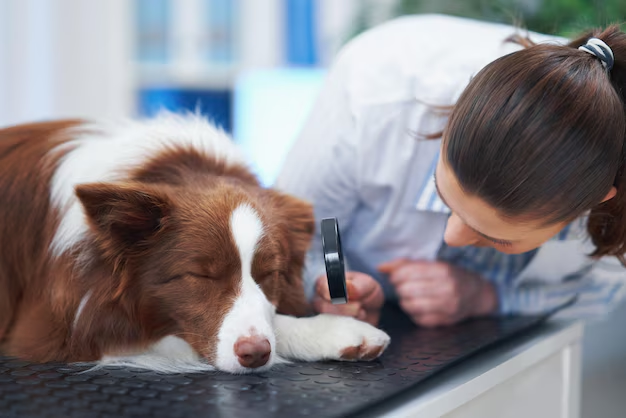Understanding the True Cost of Canine Cataract Surgery: What Pet Owners Need to Know
When our loyal companions face health challenges, it’s only natural to seek the best possible solutions. One common ailment in aging dogs is cataracts, which can significantly impair a dog’s vision, leading to further health issues if left untreated. For many pet owners, the prospect of canine cataract surgery presents both hope and questions, particularly about the procedure's cost. Here, we delve into everything you need to know about canine cataract surgery, related considerations, and how it can affect your wallet and your pet’s well-being.
🐾 What Are Canine Cataracts?
Cataracts in dogs, much like in humans, refer to the clouding of the eye's lens, which interferes with light reaching the retina, causing blurred or distorted vision. This condition is most common in older dogs, although it can occur due to genetic predispositions, injuries, or underlying health conditions such as diabetes.
Signs of Cataracts in Dogs
- Cloudy or milky appearance in one or both eyes
- Bumping into furniture or walls
- Reluctance to navigate stairs or jump
- Increased anxiety or clinginess
- Changes in eye color or pupil shape
💸 How Much Does Canine Cataract Surgery Cost?
Cataract surgery is a specialized procedure performed by veterinary ophthalmologists. The total cost can vary widely, influenced by multiple factors, including geographical location, the vet’s expertise, and your dog’s specific needs. Generally, you can expect to pay between $2,700 and $4,000 per eye. This price range includes examinations, surgical procedures, anesthesia, and post-operative care, though it may not encompass all possible tests or follow-up appointments.
Factors Influencing the Cost
- Location: Costs may be higher in urban areas or regions with fewer veterinary specialists.
- Veterinarian Expertise: Highly experienced surgeons may charge more.
- Pre-surgical Evaluations: Necessary tests can add to the cost.
- Post-operative Care: Medications and follow-up visits are crucial for recovery.
- Complications: If additional procedures or extended care are needed, costs can increase.
💡 Is Insurance an Option?
Pet insurance can be a practical way to manage the cost of canine cataract surgery. Many pet insurance plans cover some percentage of surgical procedures, but coverage specifics can vary. It's essential to understand your policy’s terms, including any waiting periods or exclusions regarding pre-existing conditions.
Key Considerations for Pet Insurance
- Understand what’s covered: Check if cataract surgery is included in your policy.
- Evaluate deductibles and co-pays: Determine out-of-pocket expenses.
- Research waiting periods: Some policies have mandatory waiting times before covering surgeries.
- Consider policy limits: Ensure the coverage limit meets potential costs.
🏥 What Occurs During Cataract Surgery?
Cataract surgery for dogs involves the removal of the cloudy lens, typically using a technique called phacoemulsification, where the lens is emulsified and extracted. Often, a synthetic intraocular lens (IOL) is implanted to restore vision clarity.
Surgery Process at a Glance
- Pre-operative Evaluation: Includes eye exams and potential blood work.
- Anesthesia: Administered under expert supervision.
- Phacoemulsification: Removal of the lens using ultrasound waves.
- IOL Implantation: A new lens is inserted for vision correction.
- Recovery and Monitoring: Includes pain management and progress tracking.
🤓 Alternative Treatments and Considerations
While surgery is the most effective treatment for canine cataracts, it’s not the only option. Alternatives or supplements to traditional surgery include:
- Topical Treatments: Eye drops might slow cataract progression though such results vary.
- Diet and Supplements: Nutritional support for overall eye health.
- Management of Underlying Health Issues: Control diseases like diabetes to prevent further cataract development.
Weighing Surgery vs. Alternatives
Consider factors like your dog's age, overall health, and quality of life when deciding on surgery. Veterinarian consultations can offer clarity on the best course of action and alternatives available.
🌟 Making the Decision: Is Cataract Surgery Right for Your Dog?
Deciding on cataract surgery involves assessing both your financial readiness and your dog’s health status. This surgery could drastically improve your pet's quality of life, restoring confidence and mobility. However, it requires a commitment to post-operative care and a financial decision based on your circumstances.
Questions to Ask Your Vet
- What’s the prognosis with and without surgery?
- What post-operative care will be necessary?
- Are there risks or potential complications?
- How does my dog's overall health impact surgery potential?
Summary Snapshot 📋
- Cataract Surgery Cost: $2,700 to $4,000 per eye.
- Insurance: Consider insurance to offset costs.
- Surgical Process: Involves phacoemulsification and potential lens replacement.
- Alternative Options: Include eye drops, diet changes, and managing health issues.
- Decision Factors: Cost, health impact, and quality of life improvements.
Exploring the option of cataract surgery for your dog involves numerous considerations, from understanding costs to evaluating treatment specifics and alternatives. An informed, balanced approach will help ensure the best care for your beloved pet, bringing renewed clarity, confidence, and companionship for years to come. 🐕💖
